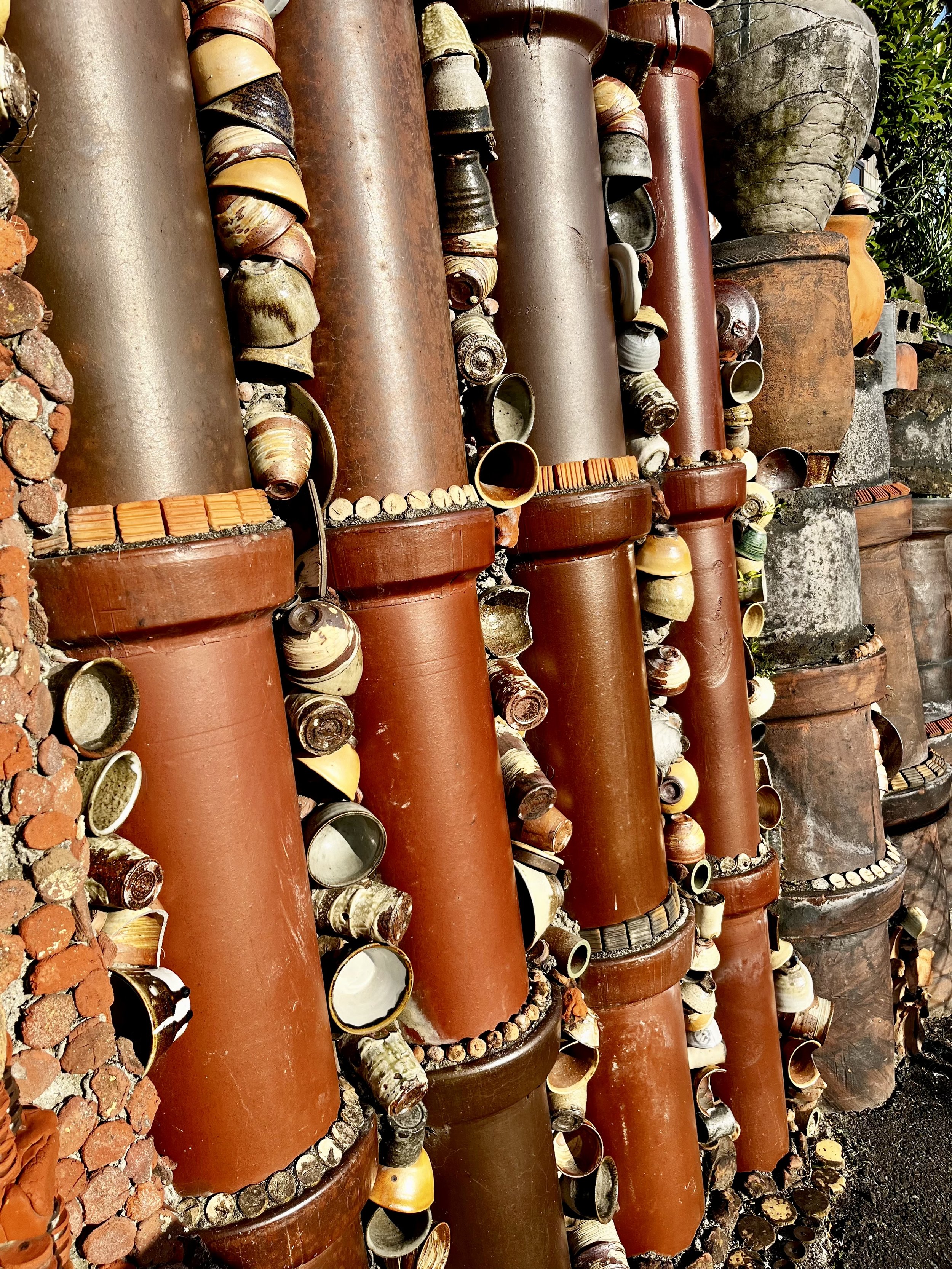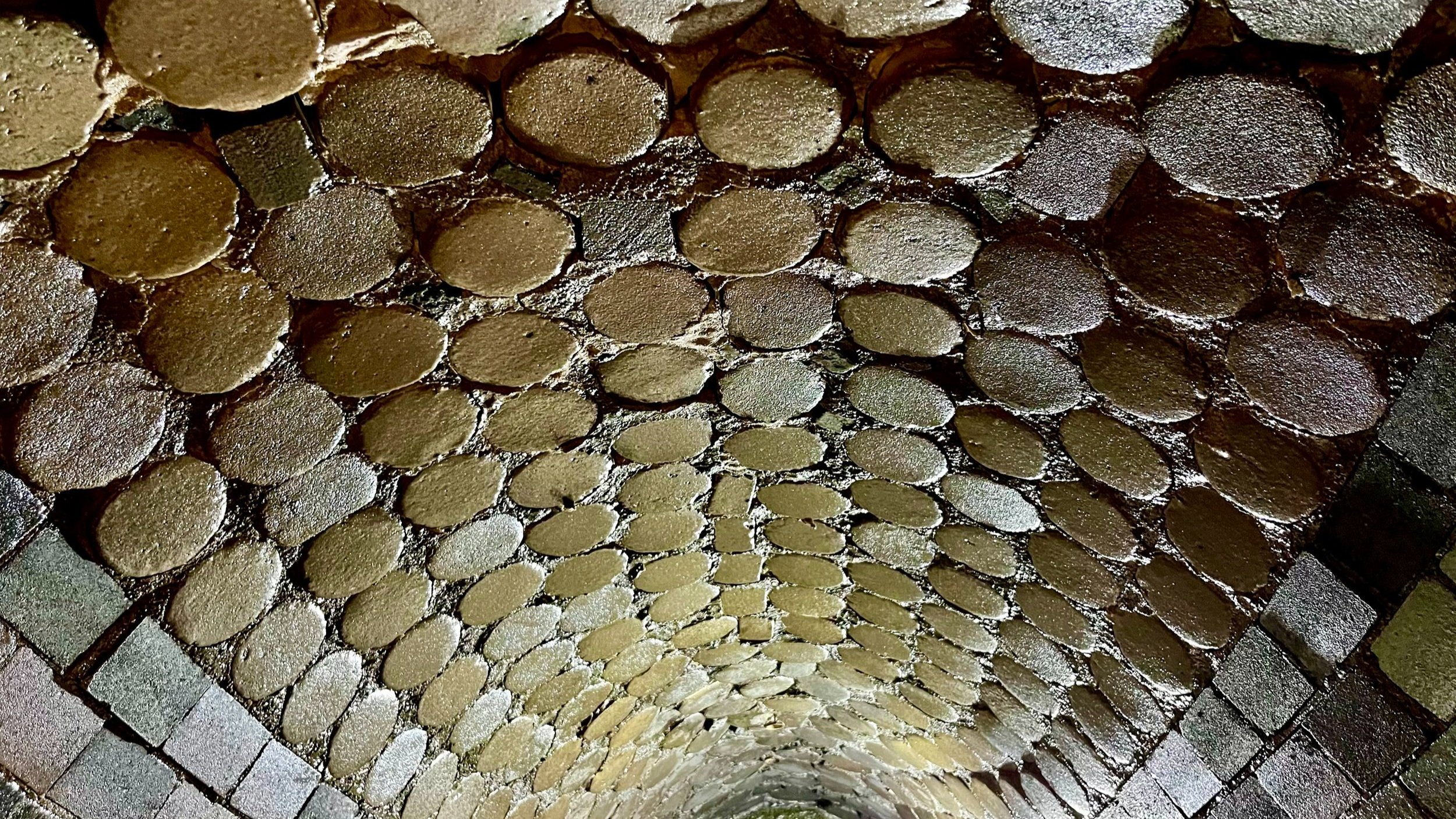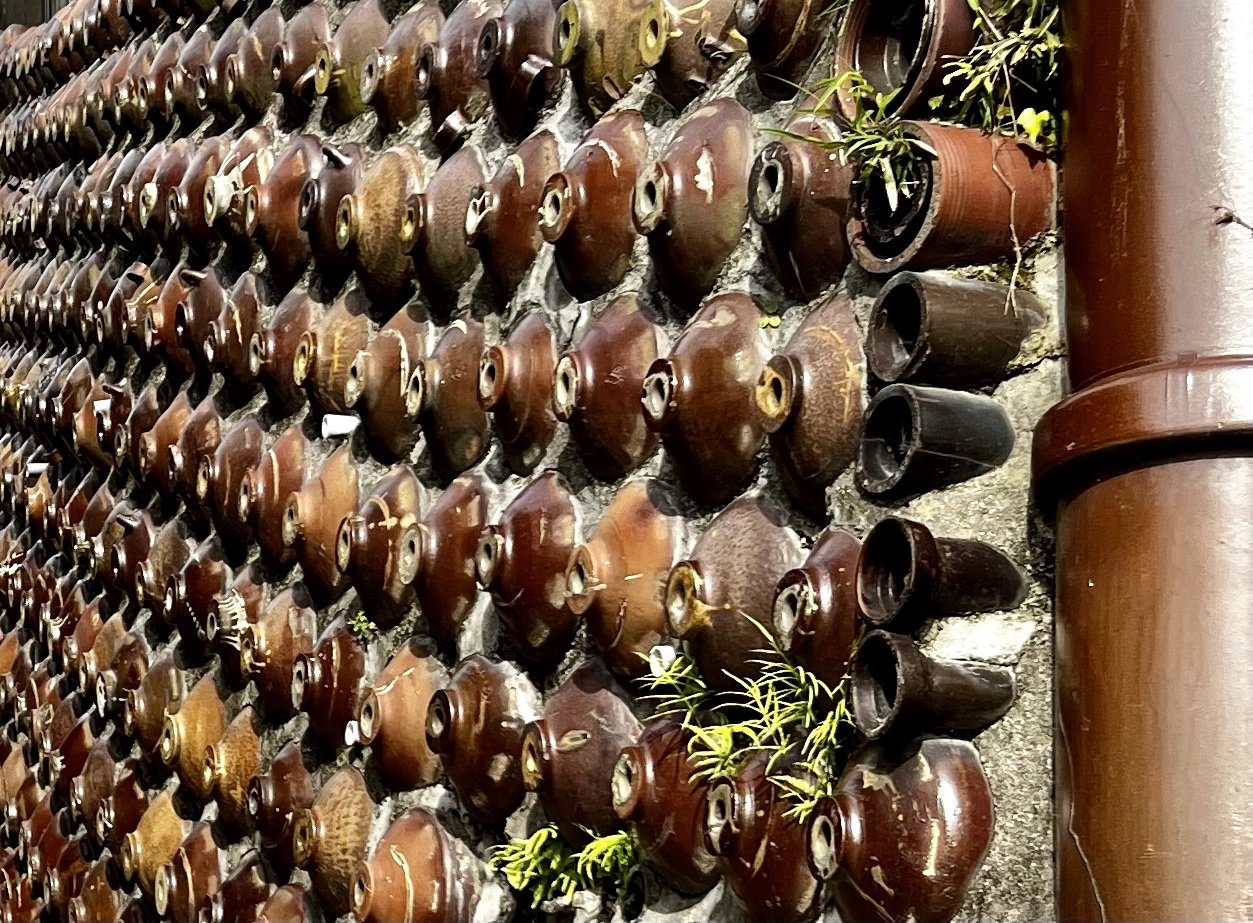Historic Pottery Towns in Japan
This is my kind of museum…
walking narrow streets through Seto and Tokomane seeing remnants of old coal burning kilns, pottery shards/artifacts/tools, dodome heki walls [reinforced by using dokans (ceramic pipes), danmas (large bricks), egoro (refractory boxes), and shochubin (liquor bottles)]…
chimney stacks and black tar covered buildings take me back into a time and place when the air was filled with sooty smoke from the coal burning kilns that blanket the hillsides.
Masai and Shozo Michikawa invited me to their home in Seto. Being able to see Shozo’s studio and learn about the history of Seto through going to museums, wandering the streets and finding a great coffee shop called Little Flower Coffee was such a memorable experience, as was sharing food, laughter and conversation with Masai and Shozo…
and keeping warm under the kotatsu, which is my new favourite thing :)))
Here are just a few images I took while wandering the historic streets of these two towns.


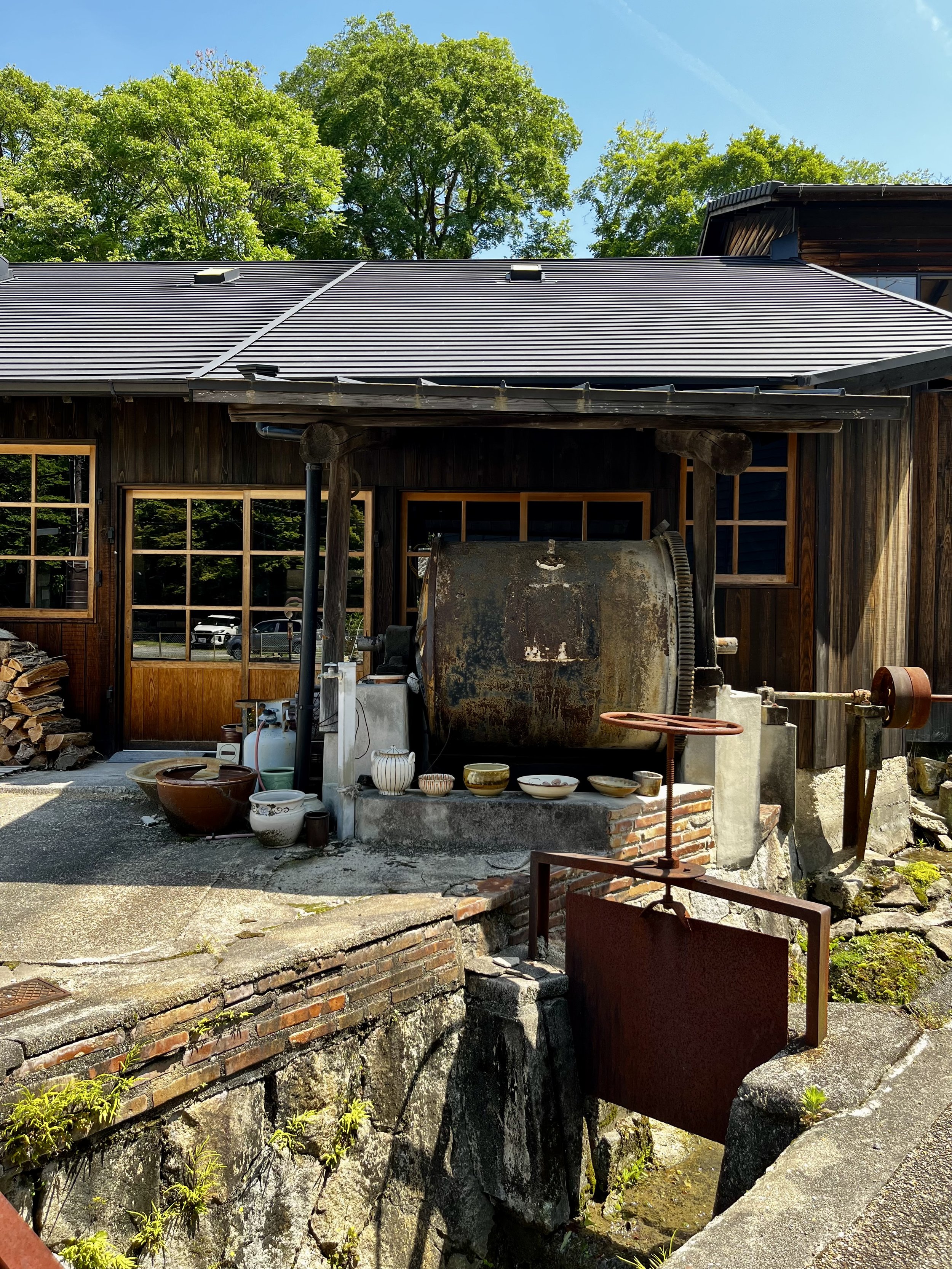




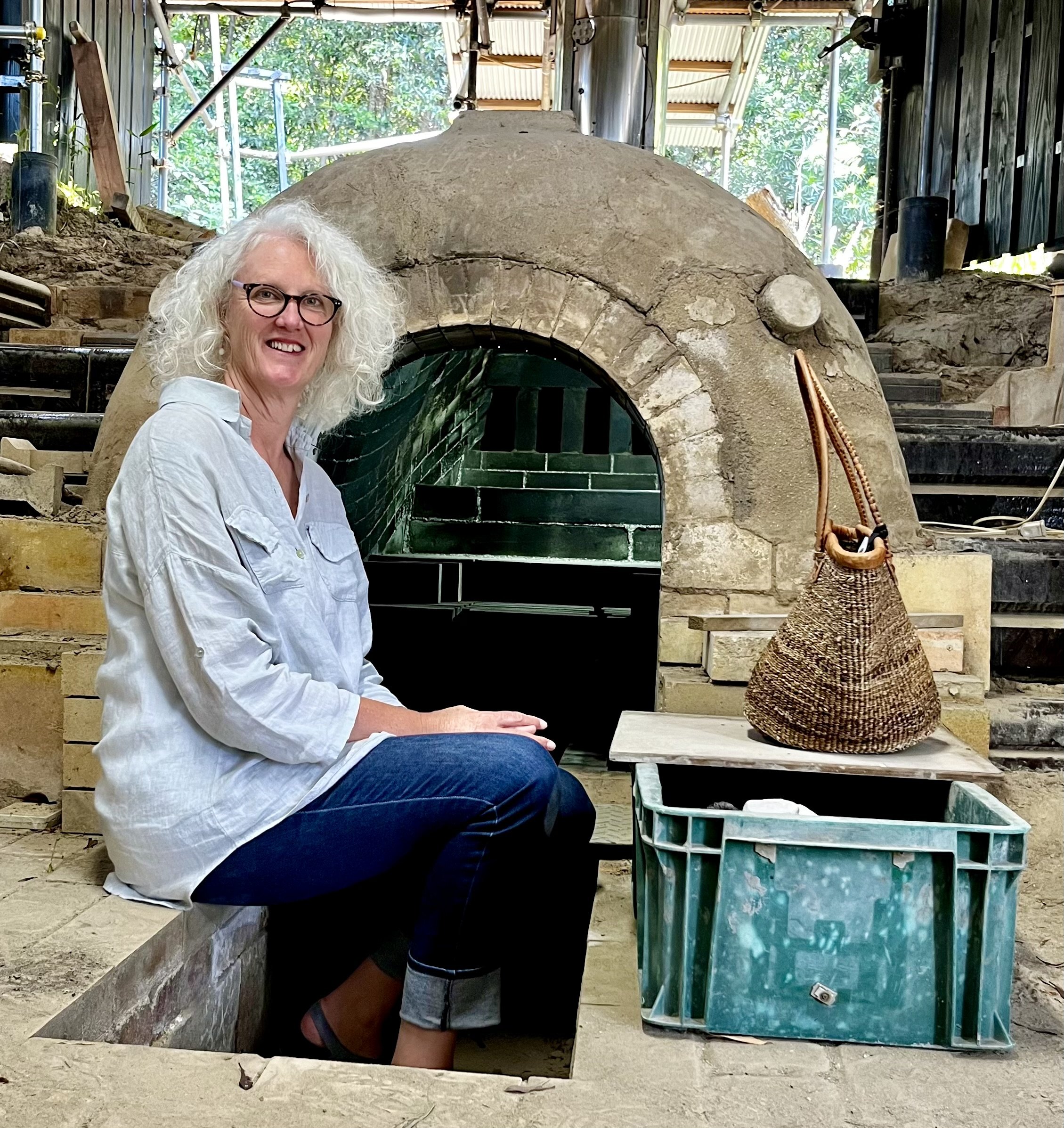
Shozo connected me with Kazuko and Junichi Yamanaka in Tokaname where I stayed at their beautifully restored art home, Hills House, next to the Pottery Path. Their home was truly delightful and the hosts even thoughtfully arranged visits to artists homes in the area for me. Getting to go to ceramicists homes to have tea and see their studios and backyard kilns was totally unexpected and a real treat!
One of the highlights was meeting ceramic artist Mami Kato right in the middle of wood firing! I felt enlivened by our conversation and was enthralled by Mami’s work, her authenticity and learning more about her Earth Pot process.
Here we are at Mami Kato’s kiln with another ceramacist, Antonella, who I met at Hills House airbnb and who ventured all the way to Sasama to come stay with me for a few days.
Tokaname is the oldest of the six ancient kilns in Japan and dates back to the Heian Period (794-1185). At one time about 60 climbing kilns operated in the town limits, among them, Japan’s biggest, being the Nororigama (Toei Kiln), with 8 firing chambers and 10 chimneys that operated from 1887 until 1972.
Serendipity has it that as I was wandering the pottery path with my host at Hills House we ran into Yuichi Hirano who was born into a traditional 4th generation ceramics family. For generations his family was in charge of the firings held at the big Nororigama kiln.
Hirano san invited me to his studio located in the historical district only a few minutes away from the Nororigama kiln.
I was in heaven seeing the diversity of his wood fired ceramics and thoroughly enjoyed a most welcoming, warm and friendly visit. I bought one of his pieces…
one that I couldn’t take my eyes of.
For a ceramic enthusiast, visiting these two towns and seeing pottery everywhere ~ even in showcases on the bridges in Seto ~ was so enlivening. My deepest gratitude to Masai and Shozo Michikawa and Kazuko and Junichi Yamanaka for making my stay in these two towns so authentic and inspirational.
Photo of Art Installation by Kenkicki Yamada at Tokoname train station
